Content
- 1 Secrets of growing David's buddley in the northwest region.
- 2 Growing conditions.
- 3 Reproduction.
- 4 Features of the budley
- 5 Growing budley from seeds
- 6 Landing budley
- 7 Care features
- 8 After flowering
- 9 Main types and varieties with photos and names
- 10 Outdoor Budleia Care
- 11 Reproduction of budley
- 12 Budleya - care and cultivation in the garden (video)
- 13 A little about the plant
- 14 Popular types
- 15 Seed preparation
- 16 Landing rules
- 17 How to care
- 18 Using buddley
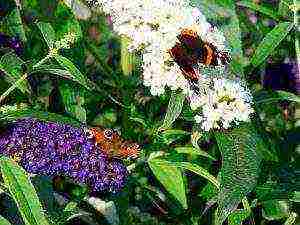 Buddléja davídii
Buddléja davídii
Buddlea (lat. Buddléja) - there are more than 100 species of this beautifully flowering shrub growing in tropical, subtropical and partly temperate latitudes of America, Asia and South Africa. Buddleya blooms with large, fragrant inflorescences, reminiscent of lilacs, in the second half of summer and autumn. Very attractive to butterflies. Of all kinds, only buddleya david (lat. Buddléja davídii) suitable for cultivation in the north-western region of Russia. What does it take to successfully grow buddleya in the northwest?
Secrets of growing David's buddley in the northwest region.
Firstly, it must be borne in mind that buddleya is a calcephilus.
| reference
Calcephiles (calcephytes) (from lat.calx, genitive calcis - "lime" and Old Greek. φιλέω (phileo) - "to love") - plants that live mainly on soils rich in calcium compounds, as well as in places where limestone, marl, chalk and other rocks emerge. |
Secondly, Buddléja davídii does not tolerate winter soaking. If water accumulates at the budlei planting site in the autumn-winter period, then most likely the buddlea will not survive wintering.
Third... Last year's shoots do not hibernate without shelter. What to do? Harbor? You can cover it, but there is an easier way - cut it on a stump in the fall. The fact is that buddleya blooms on new, annual growths, so short pruning does not affect flowering. In addition, buddlea bushes have such a high vigor of growth that in two months they can expel shoots up to two meters long.
Fourth... It is worth remembering that Buddléja davídii comes from China and is quite thermophilic. In practice, this means that regrowth starts very late. I have had cases that regrowth began in July, but by mid-August the bushes had time to gain their usual height and bloom.
| Recommendation
Do not rush to uproot bushes that seem to have died as a result of wintering. Buddléja davídii wakes up late; in some years, regrowth may begin in mid-July. |
Fifth.Remember - heat-loving plants do not winter well when overfeeding.
Growing conditions.
On the whole, Buddléja davídii is undemanding in terms of growing conditions.
The soil. Prefers calcareous, well-drained soils.
Humidity requirements.Although buddleya does not tolerate wet feet, in summer, during particularly dry periods, it will sometimes have to be watered. It will show the need for watering by reducing the turgor of the leaves.
The sun. Prefers a sunny location, but can tolerate light partial shade.
Fertilizer. Does not require. If you want to feed, then this should be done only in spring and early summer.
Pruning. Autumn pruning on a stump. If the plant is not pruned in the fall, but hides in the winter, then a formative pruning is required in the spring.
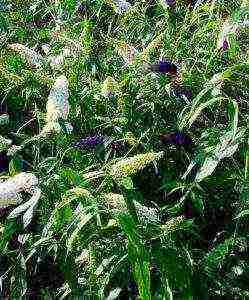 Blooming Buddleja davidii in the Leningrad region.
Blooming Buddleja davidii in the Leningrad region.
| Recommendation
Since Buddléja davídii is a late growing shrub, when choosing a place to plant it is necessary to hide the “legs” behind other faster growing plants. |
Reproduction.
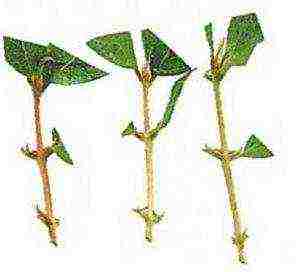 Preparing green cuttings.
Preparing green cuttings.
The easiest way to propagate Buddléja davídii is by cuttings. The buddles are so easy to cut that it does not even require treatment with means that stimulate root formation. Just pluck a young shoot, cut it into cuttings with several internodes and stick them into the ground, shade and do not let it dry out. The tip of the shoot, which usually does not go to cuttings, because too soft and quickly loses moisture, buddleya will also go into business.
Seed propagation is a tedious process and, in addition, the varietal characteristics of the mother plant may not be preserved.
Sometimes, in separately successful warm years, even in the Leningrad region, buddleys can get hooked on their own.
See the option of using buddley in a shrub mixborder in Shrub mixborder. 3D project.
Buddleja shrub (Buddleja) is also called buddleya, it is directly related to the norichnik family. Under natural conditions, it can be found in temperate as well as warm regions of Asia, South Africa and America. This shrub was named after the Englishman A. Buddle, who was a botanist of the late 17th and early 18th centuries. In his homeland, this plant was called orange-eyed. Budleia is also called "moth tree" or "butterfly magnet". And all because the flowers of such a shrub have a strong honey smell, due to which large, very spectacular butterflies flock to pollinate them. During flowering, the twigs of this plant are very similar to lilac, in this regard, it is also called "autumn lilac".
Features of the budley
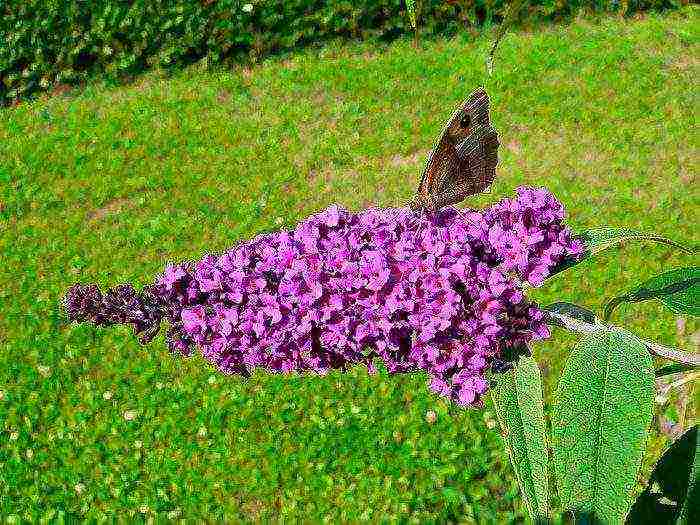
In nature, there are a large number of species of buddleya, or rather, about 100. This genus is represented by deciduous or semi-evergreen shrubs and herbaceous plants. They bloom late and long enough. The peculiarity of the budley is that during the flowering period, flowers, buds and fruits are simultaneously present on its branches.
The height of the bush can vary from 150 to 300 centimeters. In most species, paired leaf plates have a lanceolate shape, which can reach 1–30 centimeters in length. In Asian species, panicle inflorescences can be 10 to 50 centimeters long. And American species have spherical inflorescences. Small tubular flowers are very smelling melliferous, they are divided into 4 lobes, like lilac flowers. They can be painted in a variety of color shades: red, yellow, lilac, white, pink, orange, crimson. In this case, the intensity of the color of the flowers may vary. The fruits are represented by oblong boxes with seeds inside. Cultivated species and varieties are frost-resistant, but if the plants are not covered, then in the winter with little snow they can freeze out. However, only that part of the plant that is above the ground will die, and in spring a large number of young shoots will appear from the ground, in the same year it can begin to bloom. There are species that have high frost resistance, they are not afraid of frosts down to minus 20 degrees.
Growing budley from seeds
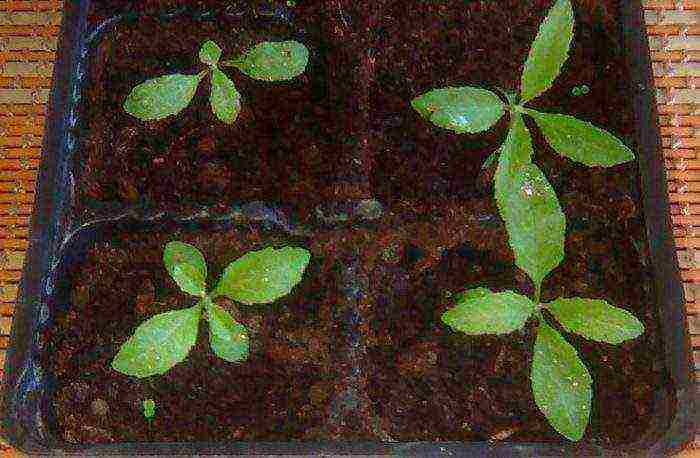
In middle latitudes, budley seeds on a bush most often do not ripen, but you can resort to such tricks as stratification or sowing on a snow layer. Experts advise purchasing the seeds of this plant in a specialized store, and it is best to choose foreign producers. The seeds of buddleya are very small, in order to make it easier to sow, it is recommended to combine them with sand. Fill wide bowls with neutral soil. There should be drainage holes at the bottom of the container, also make sure to make a good drainage layer. Sow the seeds onto the surface of the substrate and press down lightly (do not burrow). Water the crops with a spray bottle and cover the container with glass or plastic. The dish must be removed to a warm place with an air temperature of 22 to 25 degrees, it must be well lit and protected from direct sunlight.Sowing should be done at the beginning of the spring period. The first seedlings will appear after 7-14 days. The plant must be systematically ventilated and watered. In order to avoid the development of the "black leg", it is necessary from time to time for watering to use a solution of manganese potassium pinkish color.
Budley seedlings
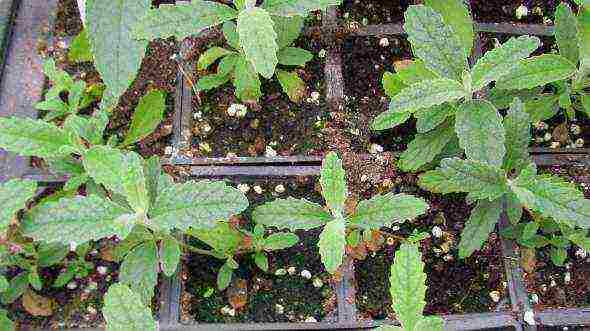
After the young plants grow up, the shelter can be removed. After the appearance of 2-3 pairs of real leaves, the budley should be transplanted into individual containers, and it is better if these are peat pots. After that, the seedlings need to be hardened in the fresh air, for this you should open the window for a short time, but there should be no draft.
Landing budley
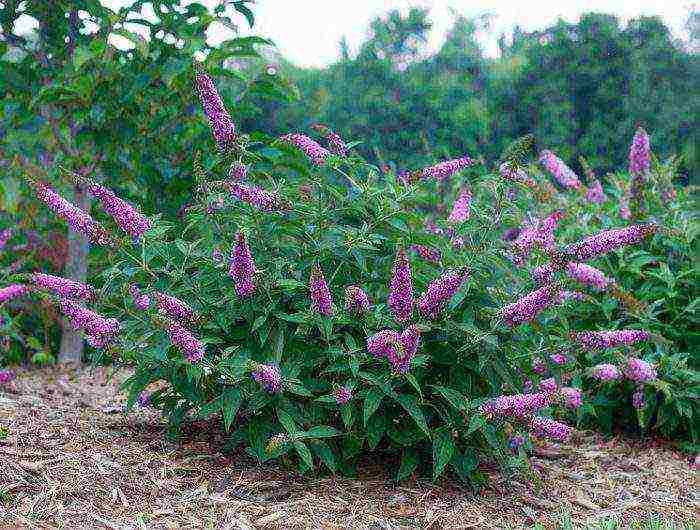
What time to plant
The buddleya should be planted only after the threat of frost has passed. An area suitable for planting should be well lit and protected from strong gusts of wind, as well as from drafts. The soil should be neutral, well-drained, moisturized, rich in nutrients.
How to plant a budley
When planting, it should be borne in mind that the buddlea bushes grow strongly, so a decent distance must be left between them, otherwise they will be very cramped. The landing hole should have a size of 40x40 centimeters. The depth of the hole should be equal to the size of the root system plus 20 centimeters. A drainage layer should be made at the bottom of the hole, and fertilizer should also be added. The height of the drainage layer should be between 10 and 15 centimeters. To create it, you should use the material of the coarse fraction. A handful of garden soil is poured on top of this layer, which should be mixed with the same amount of compost and mineral fertilizer. Then you need to put a seedling on this mound and straighten its roots. Pour the required amount of soil into the hole, after which it must be compacted. Then the plant is watered, and the surface of the soil is covered with a layer of mulch (compost). Please note that when planting, the root collar is flush with the ground surface.
Care features
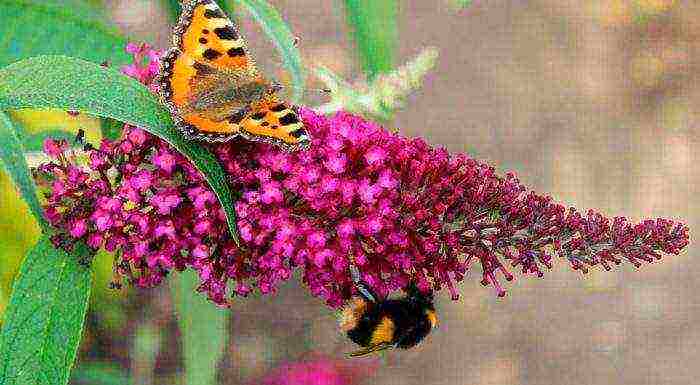
Watering this shrub should be carried out only during the dry hot period. For 1 bush, 10 liters of well-settled tepid water is taken. Water is poured into a groove that should be made around the plant. Budlea is a fast-growing plant, its stems can grow up to 200-250 centimeters per season. In order to achieve abundant, long-lasting flowering, it is necessary to make 2-3 fertilizing per season with fertilizer, which includes phosphorus and potassium, which accelerate growth and improve flowering. They also contribute to the fact that the size of the inflorescences becomes larger. And the shrub can be fertilized with organic matter (liquid compost and humus). It is recommended to alternate fertilizing with mineral and organic fertilizers. Also, this plant needs regular loosening of the soil surface, which must be carried out at a shallow depth and very carefully, since the root system lies close to the soil surface. And you also need to systematically weed.
Pruning budley
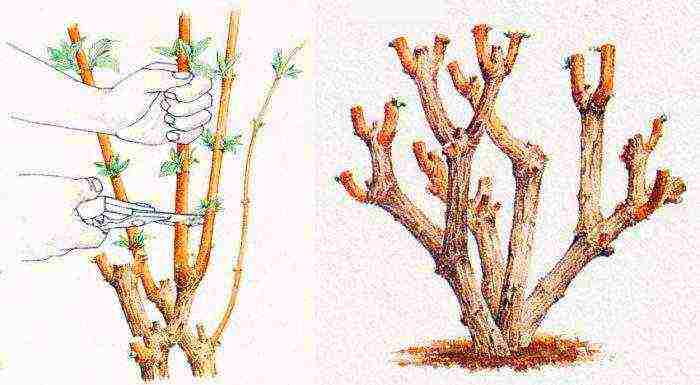
Trimming the buddleya is necessary. The fact is that if it is not carried out, then the stems become elongated and bare, as a result of which the bush loses its effectiveness and looks sloppy. Pruning also contributes to the fact that the flowering becomes more abundant. Those inflorescences that have begun to fade must be cut off, since buddhie needs a lot of strength to grow new flowers. In spring, after the heat is established on the street, the bushes will need to be cut off, so tall varieties are cut to a level of 90 centimeters from the soil surface, and undersized ones - up to 30 centimeters. As a result, the plant will have an attractive appearance, and its flowering will become even more lush and spectacular.
Reproduction of budley
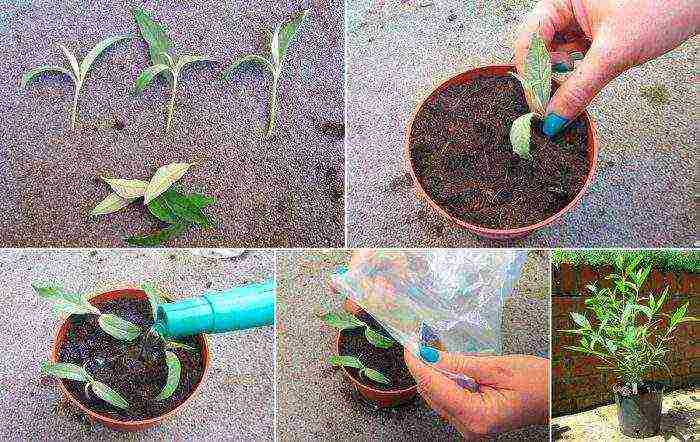
How to propagate budley seeds is described in great detail above.Also, such a shrub is often propagated by cuttings. In the autumn, after flowering is over, it is necessary to cut the cuttings, choosing for this annual shoots, which can be lignified or green. Then they are removed to a cool room that should not freeze through, the cuttings will be there until spring. It will be possible to plant them in the ground for rooting only next spring. If desired, cuttings can be planted in the ground for rooting in the fall, while their roots will grow back in a couple of months. When cutting, it is necessary to ensure that at least three buds are present on the cuttings, while two of them should be covered with earth during planting. Rooted cuttings must be covered so that they do not die from winter frosts, and in spring they will need to be transplanted to a permanent place. Those cuttings that were stored before the onset of the spring period should be planted in open ground in a permanent place after the threat of frost has passed.
Pests and diseases
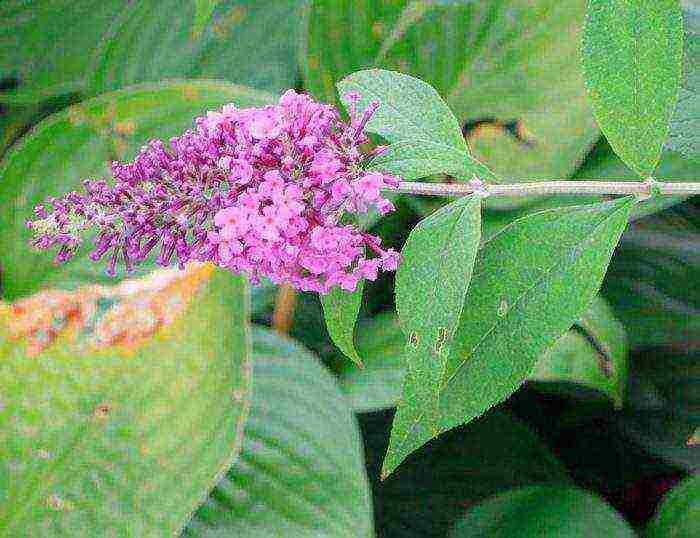
Only whiteflies and spider mites can settle on the buddlea, while they prefer hot, dry weather. In the event that you are unable to maintain the required air humidity, you will need to cut off the affected stems, and then treat the bush with an appropriate insecticidal agent. However, this plant is very resistant to diseases and pests, therefore, when grown in a garden, problems with it are extremely rare.
After flowering
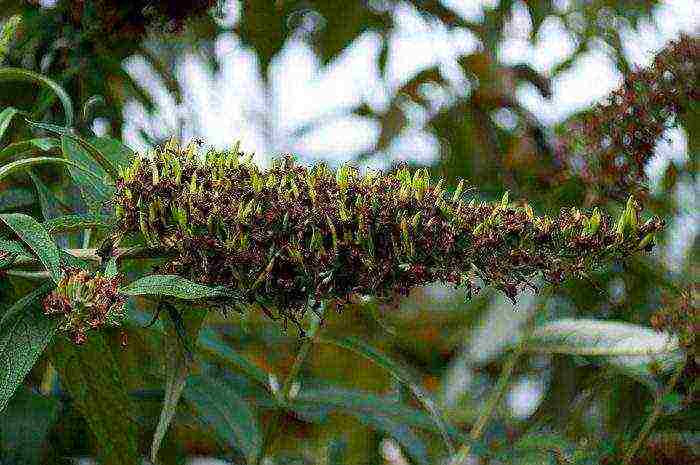
Seed collection
The seeds of this shrub must be harvested after they are fully ripe. As a rule, this time falls on September or October. However, those seeds that you collect yourself will need to be prepared for a long time before sowing, but this does not guarantee that they will sprout well. Because of this, experienced gardeners recommend buying buddlea seeds rather than harvesting them.
Wintering
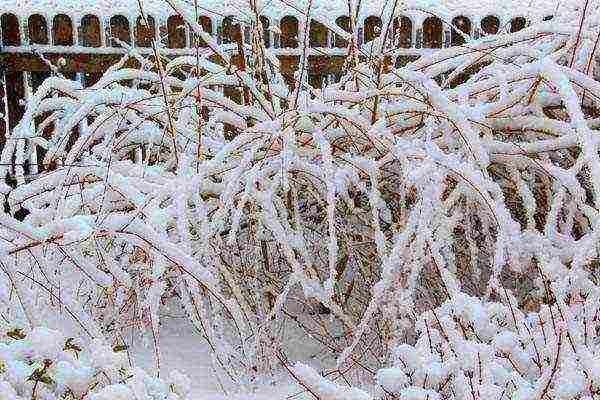
After the leaf plates on the shrub begin to turn black, it will be necessary to huddle the bushes with dry soil to a great height (at least up to the height of the third bud on the stems). Then it will be necessary to cut off the branches, while it is necessary that only 20 centimeters rise above the mound. Then the bush needs to be covered with spruce branches, and a box made of wood should be installed on top of it. Lay roofing material on top of it and securely fix it with stones and bricks, so that the wind cannot destroy the resulting structure. Remember that film or sawdust cannot be used as a shelter, since, being under them, the plant may begin to rot. As for the box, its size should be as large as possible. The fact is that in this case, the plant will be provided with a large amount of air that it needs.
Main types and varieties with photos and names
Several different species are cultivated in the middle latitude, and the most popular is Buddleja davidii. Derivatives of this type are also very popular, for example: Wilson buddleya - lilac-pink inflorescences have a rich color, and they reach about 0.75 m in length, Vicha buddleya - it is taller, beautiful buddleya - bright purple-pink inflorescences are very large and fluffy.
Buddleja davidii

The height of such a deciduous shrub can vary from 200 to 300 centimeters. And also this plant may not be a very large tree (height 5 m), the ends of the branches of which are drooping. The stems grow relatively quickly. The shape of the leaf plates is lanceolate-oval or lanceolate, with a sharpening at the apex. On the front side, they are dark green, and on the seamy side, they are yellowish-white with dense pubescence. The length of the leaves is about 25 centimeters. Fluffy spike-shaped inflorescences consist of purple flowers that have a honey smell. The length of the inflorescences is about 40 centimeters. Flowering begins in the last summer days.The flowering period is 6 weeks. Varieties:
- Alba, White Cloud and White Profusion - have white flowers;
- Empire Blue, Black Knight - flowers are painted in various shades of purple;
- Royal Red, Harlequin - flowers can be of various shades of red.
The species described below have less frost resistance, but if they are well covered, they will be able to endure wintering:
Buddleja albiflora (Buddleja albiflora)
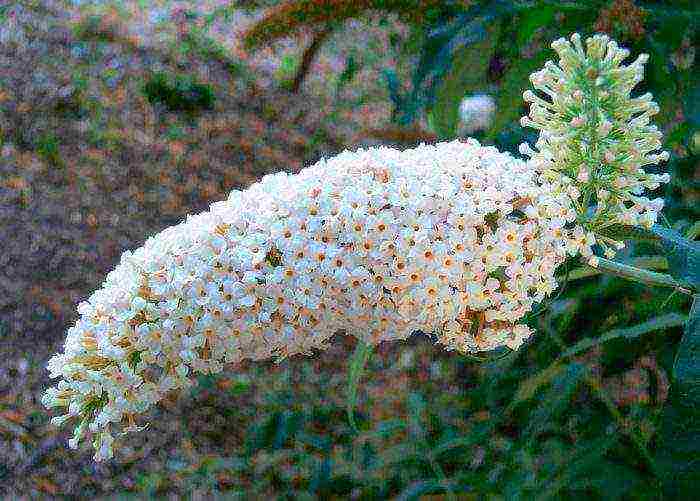
This deciduous shrub has wide cone-shaped inflorescences, painted in light lilac or white.
Snow budley (Buddleja nivea)
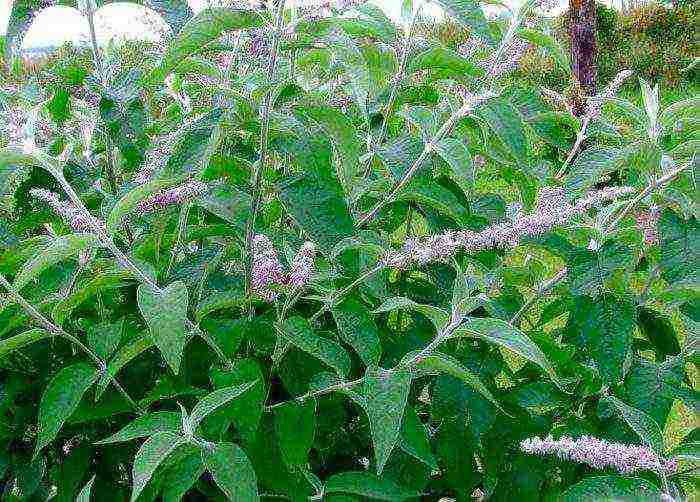
On the surface of the stems and leaves of such a deciduous shrub, there is a dense tomentose pubescence. Paniculate inflorescences are colored lilac.
Japanese Buddleja (Buddleja japonica)
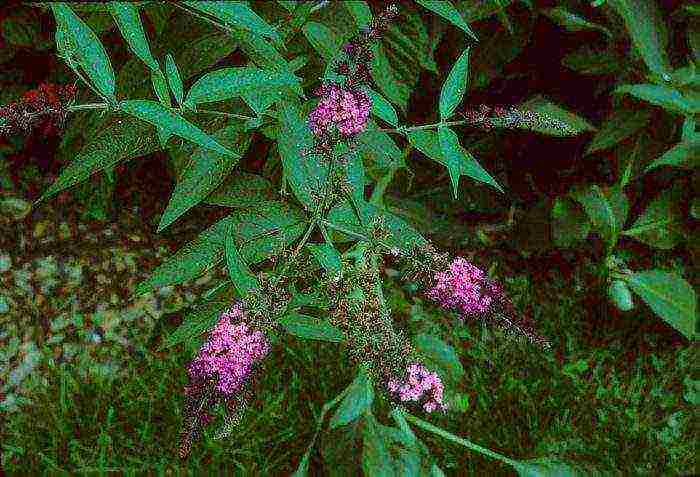
This deciduous shrub grows very quickly. The length of the drooping panicle-like light purple inflorescences is about 20 centimeters.
Budleja alternifolia (Buddleja alternifolia)
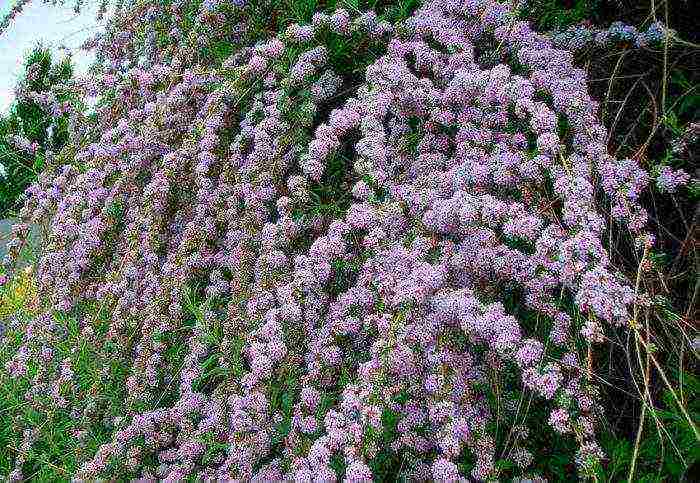
This deciduous shrub is drought tolerant. It is often grown in the form of a tree, with a crown shaped like a weeping willow. The small inflorescences include lilac or lilac-pinkish flowers with the smell of almonds.
Budleja globular (Buddleja globosa)
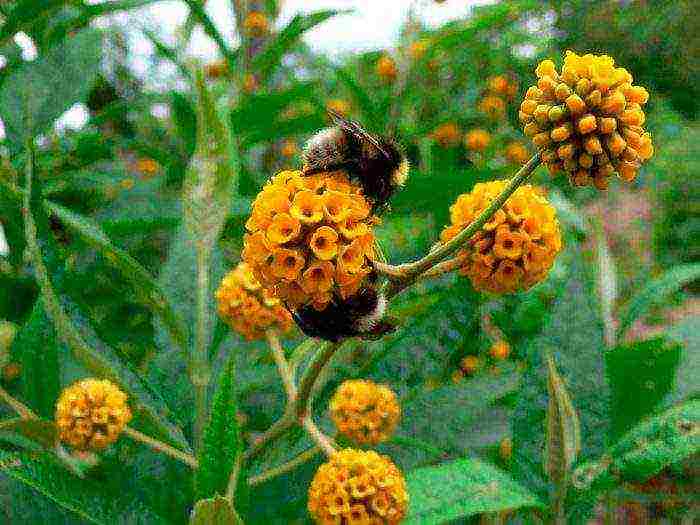
This shrub is semi-evergreen. Blooming is observed in May. Globular inflorescences are colored golden orange. Cultivated only in the southern regions.
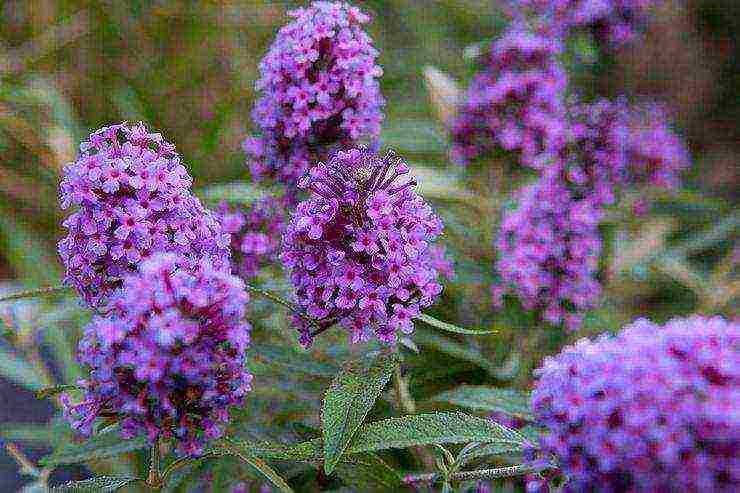
Buddleja shrub is a flowering, fragrant plant with a high decorative effect and is very popular among amateur flower growers and landscape designers. The culture goes well with many perennials, it can grow in group and single plantings. The plant resembles a multi-colored fountain of heavy lush fragrant inflorescences.
Among several dozen different types, you can choose a specimen suitable in color and shape for your site, which can be used for landscaping and decorating the territory. A hedge of flowers of all iridescent shades not only attracts the attention of butterflies and bees, but also cannot leave indifferent any, even casual, glance. When growing budley in a personal plot or in a country house, it must be remembered that it comes from the southern regions and is a very thermophilic and light-loving plant. For the full development of the bush, you need to create all conditions close to its natural habitat.
Outdoor Budleia Care
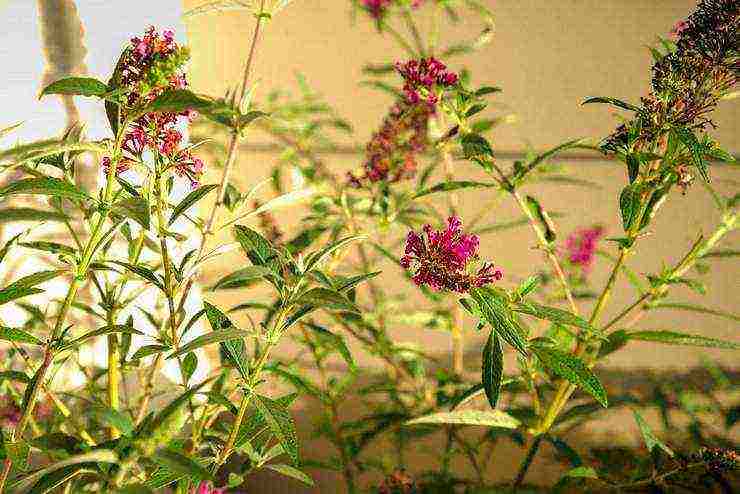
Landing budley
The budlea planting site should be open, with sufficient sunlight during the day, but protected from drafts and sudden gusts of wind.
The culture does not impose special requirements on the soil, but it will grow better on light nutritious soil with good and regular moisture.
Top dressing and fertilizers
Budleya responds positively to additional feeding, which is perfectly reflected in the timeliness, duration, splendor and brightness of flowering. Fertilizers are recommended to be applied 2-3 times per season.
The first time is at the beginning of the growing season. Nitrogen-containing top dressing promotes plant recovery after the winter period and ensures its active growth and development.
The second time is in the middle of the summer season. It is recommended to apply fertilizers with a high content of potassium and phosphorus. They have a positive effect on the intensity of flowering and the formation of new shoots. You can use a variety of organic fertilizers (for example, compost or rotted humus).
The third dressing can be applied periodically during the summer months. It is recommended to pour a small amount of wood ash into the trunk circle of the shrub. Such fertilizer will protect budleia from various pests and diseases, as well as support the immune system.
Budlea after flowering
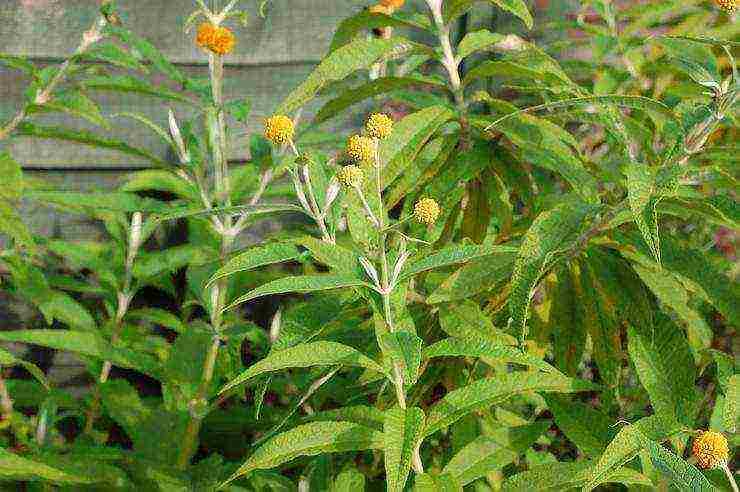
Depending on the type of plant and climatic conditions of the region, the flowering period of the shrub lasts for 1.5-2 months, starting from August - September.After the end of abundant and lush flowering, faded inflorescences-panicles of a red hue remain on the culture, which spoil the appearance and attractiveness of the bush. The main rules of care include timely pruning of such inflorescences.
Shelter for the winter
Cold and long winters are a real challenge for a crop with very low winter hardiness. Reliable shelter can help wake up in this difficult period. In harsh winter conditions with temperatures below 15-20 degrees, the shrub can freeze out completely, to the very base. True, with the arrival of the warm spring sun, recovery takes place, and flowering still comes. Only such stressful periods after 3-4 years, even if all the rules of care and maintenance in warm seasons are followed, will lead to a loss of decorativeness and a gradual withering of the culture.
Experienced gardeners and florists recommend pruning the stems after flowering, leaving about ten centimeters from the soil level, and then hilling. The stems remaining on the surface of the earth must be covered with a thick layer (about 10 cm) of peat or humus. In dry, frosty winters, such protection will be sufficient, and during a wet winter period, additional measures will be required in the form of a frame with a covering material. In this case, the plantings are covered with fallen leaves, and a wooden or metal "skeleton" with a cover of spunbond or lutrasil is erected on top. Such work is recommended to be carried out in dry weather with zero temperature.
Reproduction of budley
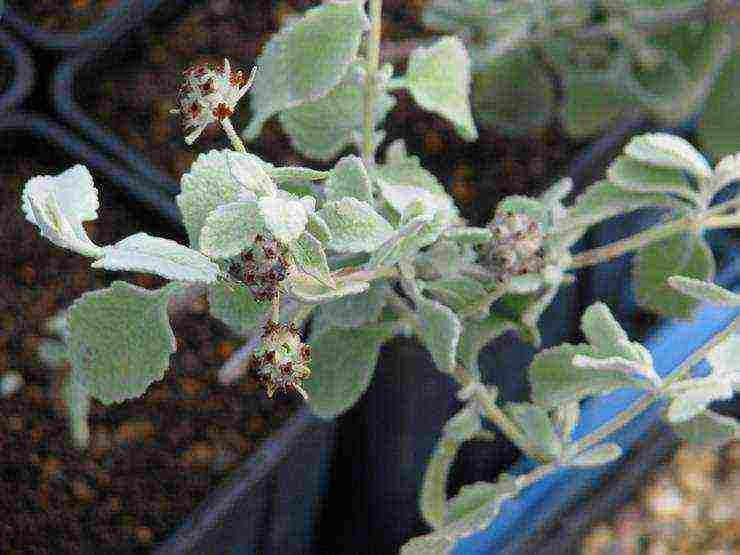
Budlea propagates by seeds and green cuttings.
Seeds are sown on the surface of a wet substrate in early spring, covered with glass or plastic wrap and left until shoots appear. Two-week-old seedlings dive into individual small flower pots, and they need to be transplanted into open ground in early June. Budley will bloom only next summer.
For grafting at the beginning of summer, cut green cuttings up to 10 cm long, the places of the cuts are treated with root formation stimulants. The seedlings are buried 3-4 cm in a special mixture of two parts of garden soil and one part of sand and peat and rooted within two months, transplanted into open ground in the fall.
Budleya - care and cultivation in the garden (video)
The beautiful thermophilic buddleya has adapted to our climate. A budley planted in the open ground, planting and caring for which requires the gardener to follow a number of recommendations, will delight with its amazing beauty and undead with a delicate aroma for more than one year.
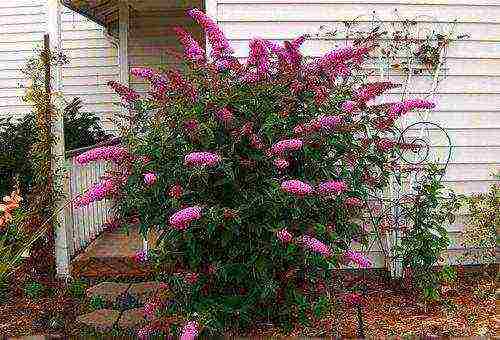
A little about the plant
In all its glory, buddlea grows in tropical and subtropical regions. The variety of their species is striking: more than 100! These are evergreen or deciduous species, with a lignified stem or herbaceous, with a height of 1.5 to 3 m.
Large leaves (in some species grow up to 30 cm) have a lanceolate-oval shape. They are arranged in pairs on the stem. Above they are dark green, and below they are white or yellow with a short edge. The fruit is an elongated capsule with many small seeds.
Abundant flowering begins from 3 years in August and lasts for 35-45 days. Small tubular flowers, collected in large spike-shaped or spherical inflorescences. They have a variety of colors. The delicate smell emanating from the flowers attracts a huge number of insects. The plant is peculiar: it can simultaneously contain buds, flowers and fruits.
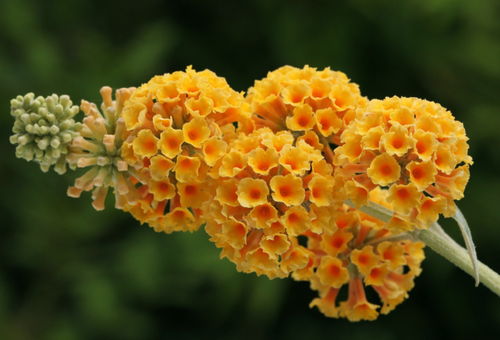 Budleja globular (Buddleja globosa)
Budleja globular (Buddleja globosa)
Among the cultivated species of buddlei, there are those that are winter-hardy, able to withstand temperatures as low as -20 ºC. The cultivation of such species is possible in Siberia.
Popular types
Of the large species diversity of plants, only some of them can be grown on the territory of our country.
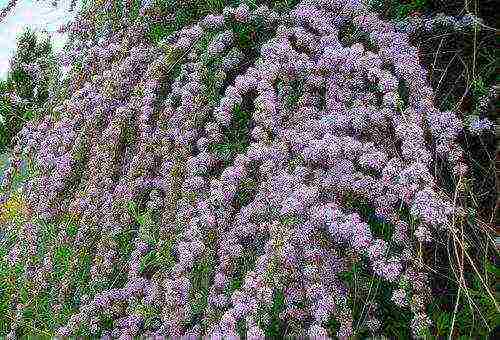 Buddleya alternate-leaved
Buddleya alternate-leaved
These are what, like:
- Pink;
- Delight;
- David;
- Red Royal;
- Alternate-leaved.
Growing them will require time and effort from gardeners, but they perfectly take root and grow in our climate.
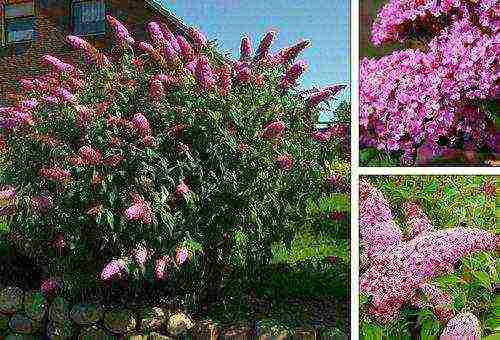 Buddleya Pink Delight
Buddleya Pink Delight
The most popular view is David. It is named after the botanist Adam Buddl, who first described the flower and introduced Europeans to it.
Buddleya David is a deciduous tall shrub that freezes to the roots for the winter, and in the spring it releases young shoots that grow up to 2-3 m.It shakes with its bright spike-shaped long (up to 70 cm) inflorescences. The usual color of her flowers is lilac-violet. The flowering period is from early July to mid-September. Narrow, serrated leaves are located opposite each other. The cultivation of buddleya as a culture began at the end of the 19th century.
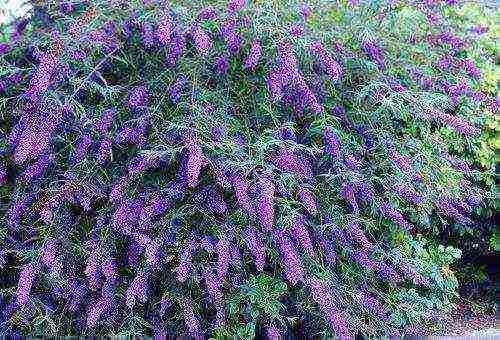 Buddleja davidii
Buddleja davidii
Seed preparation
Reproduction of buddleya occurs by cuttings and seeds. The simplest and fastest method is to grow an adult plant with cuttings.
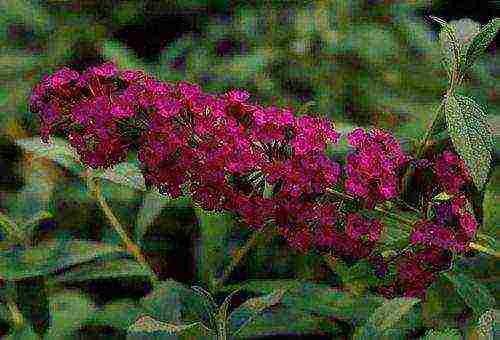 Buddleya David Red Royal
Buddleya David Red Royal
- Cuttings
They will be called sprouts that have at least 3 buds. There are 2 ways to prepare them.
- In autumn, they can be cut only after the plant has finished flowering and if a bark has formed on them. Store cuttings in a cool place (usually a cellar) at a temperature that does not fall below 0 ºC.
- Young shoots are cut off and buried immediately in a new place.
Advice: given that the rooting (adaptation) of the plant is long (about 2 months), it is not recommended to plant in this way at the end of summer.
- Seeds
To accelerate the germination of seeds, they should be sown in moist soil. Then, a "greenhouse" for the planted seeds is created with a container made of plastic or glass. As soon as sprouts begin to sprout from the seeds, the "greenhouse" is removed for ventilation. First, for 1 hour a day, and then gradually increasing this time. When 2-3 leaves grow on the shoots, they are planted (dived) in separate containers, in which they grow stronger and grow until spring.
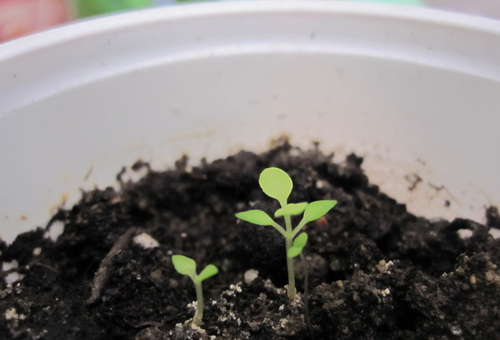
The usual watering at the root of the seedlings is unacceptable! To water the seedlings, water must be poured into a pan and the leaves are additionally sprayed.
It is important to know: a plant grown from seeds may differ in some ways from the parent. This indicates a partial or complete loss of the properties of this variety.
Landing rules
When choosing a place for planting, it is necessary to take into account the fact that buddleya is a thermophilic plant that does not like drafts. Therefore, its cultivation should take place in such an area where there will be sun and no wind at the same time. David feels comfortable with the illuminated side of fences and small buildings.
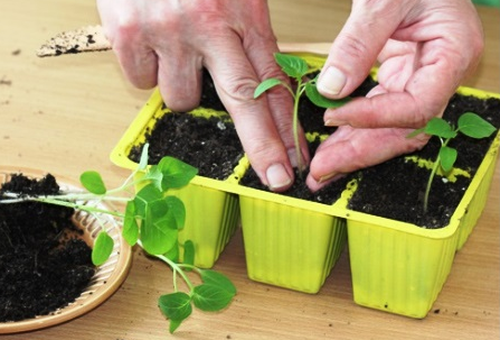
- What soil is better to plant
The shrub grows on any kind of soil. But it has been noticed that fast growth and violent flowering of buddleia can be obtained if it is planted in "light", moist soil with neutral acidity.
If the proposed planting site has a different soil, then it needs to be slightly changed. This is done simply:
A drainage layer of a fraction of about 10-15 cm is placed in the hole prepared for planting. A small layer of earth is poured onto it from the site mixed with compost and any mineral fertilizer. Instead of these components, the soil can be mixed with wood ash and phosphorus-potassium fertilizer.
- When to plant
Planting buddley in open ground is good when the frost is over and the soil warms up well. Even a slight drop in temperature below 0 ºC. can destroy a young plant.
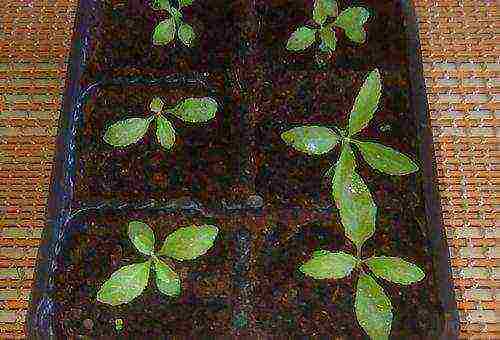
- How to plant
If a cutting is planted, then it must be buried so that 2 buds are in the ground. After planting, the soil is lightly compacted and watered. Then, the near-trunk area is sprinkled with mulch.
Advice: given that the shrub does not like an excess of moisture, it does not need to be planted in damp soil. It will be enough to moisten it with the first watering.
The size of the hole for planting is 40:40 cm, with a depth equal to the length of the root system, taking into account fertilization and drainage.
With the simultaneous planting of several seedlings in a row, the distance between them should not be less than 1.5 m. This value is calculated on the condition that the shrub grows quickly and has a spreading crown.
- Transfer
An adult David does not like a transplant, it is stressful for her. She "gets sick" for a long time after her and looks depressed. If, nevertheless, such a need arose, then the shrub is transplanted with soil around it. In the new place, it is watered abundantly.
Tip: it is unacceptable for some time after transplanting to loosen the soil next to the root system.
How to care
Caring for buddleya in the open field is not difficult, but it requires gardeners to know several rules: for abundant flowering, constant pruning is necessary, watering and timely feeding are important for plant growth and formation of inflorescences.
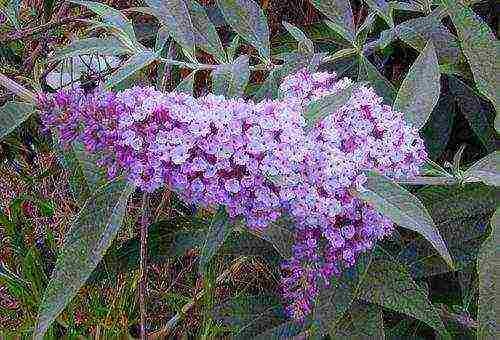
- Watering
They do not need to be abused. David does not tolerate an excess of moisture and waterlogged soil. Enough 1 bucket of water for one shrub. Watering is carried out every 10-14 days. If the days are hot and dry, then a little more often.
- Top dressing
The first feeding is carried out during the growing season. For this, nitrogen fertilization is used. It helps the plant to recover after winter, promotes the growth of new shoots.
The next feeding is carried out during the period when the shrub is gaining color. In the composition of the applied top dressing, potassium and fluorine must be present in the predominant amount. Subsequent fertilizing is carried out depending on the condition of the plant and soil.
- Pruning
The flowering of David's buddley is long lasting. Dried and faded inflorescences are constantly present on it. They just need to be cut (just do not break!).
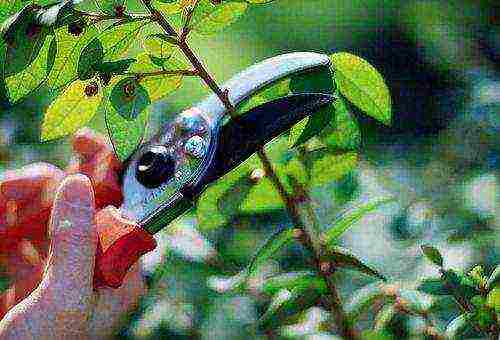
If the shrub grows for the first year, it needs to form a crown. For this, pruning of brittle and weak shoots is performed, and all the rest are cut in half.
Pruning is carried out before the onset of cold weather. All branches are cut off as much as possible so that the remaining part above the ground does not exceed 20 cm. Roots in the ground in spring will give new shoots.
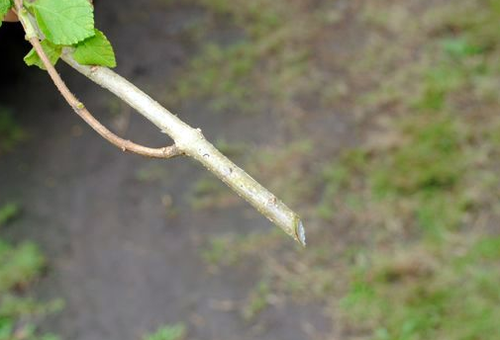
- How to prepare for winter
Buddleya David does not like frost, so she needs to be well covered for the winter. A dry shelter is applied. For its manufacture, any frame is used, up to 25 cm high. A fabric that is not able to pass water is pulled over it. Dry foliage is laid inside the shelter. It will create a favorable microclimate inside and will not let the roots rot.
Advice: so that David does not come into contact, it is necessary to provide for the flow of air under the frame.
- Disease and pest control
In rare cases, Buddleya is subject to disease. If the ground underneath is very wet, gray rot may develop. The affected bush is sprayed with fungicides.
The shrub is often chosen by spider mites, whiteflies. They usually settle on it in dry and hot weather. To destroy them, special insecticides are used, and the affected branches and shoots are removed. Spraying is recommended in the evening.
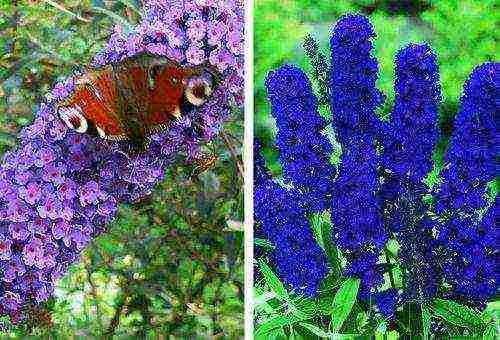
All these recommendations for plant care will allow you to grow it healthy and beautiful.
Using buddley
David is a worthy decoration for any landscape. Designers have been using it for a long time to compose luxurious compositions, fill voids in plots, and update the landscape. Its lonely plantings look spectacular among low plants. Dominating them, Buddleya fully reveals his beauty.
The spreading shrub looks good as a hedge, among flower arrangements. Different types of plants planted together are remarkably combined, differing in size, color, shape of inflorescences.
Always beautiful, luxurious, graceful buddleya will decorate the site and give a lot of pleasant, inexpressible emotions and minutes of quiet relaxation.


